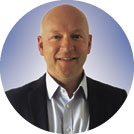 Oliver Spires, Product Manager at Idox says CAFM can help FMs provide more sustainable estate management.
Oliver Spires, Product Manager at Idox says CAFM can help FMs provide more sustainable estate management.
The Climate Change Conference of the Parties, or COP26, will take place in the UK in Glasgow, with the intention of mapping out how exactly to accelerate the actions needed to meet the goals of the Paris agreement.
The hope is that the forum will bring us closer to meeting 2030 reductions targets and align with reaching Net Zero by 2050 as planned. Currently, the carbon emissions produced by global industry are on course to rise by 1.5 billion tonnes in 2021 according to the IEA’s recent Global Energy Review. It’s an issue that can only be solved if all Governments work collaboratively.
It’s clear that technology will play a key role in changing behaviours and implementing new practices which are more sustainable. Facilities management helps organisations improve environmental performance, from monitoring the energy efficiency of buildings to reducing waste and supporting social value strategies. CAFM technology has the potential to streamline processes within organisations which will allow oversight into where emissions can be reduced.
The FM role is undergoing a seismic shift from asset management to managing employee satisfaction and wellbeing, as well as meeting sustainability targets. Now with hybrid working taking centre stage, the way in which buildings are being used has profoundly changed. Managing occupancy and energy levels now relies on smart responses to fluctuating demand.
Businesses are reconsidering their carbon footprint, and those with demonstrably sustainable practices are generally performing better especially when it comes to fostering greater public support. The responsibility to make this a reality is increasingly falling on the shoulders of facilities managers.
With this evolving responsibility comes a need for technology that makes monitoring and asset management far easier. For many tasked with managing facilities, relying on spreadsheets and manual, paper-based processes are the norm. Not only are these methods outdated, but they are simply not fit for purpose in an environment of rapid change sparked by the pandemic.
There is a need for data to be centralised, so that FMs are empowered to make more informed decisions which will ultimately benefit their business – and, in turn, the planet. This is where CAFM comes in.
UNUSED OFFICE SPACE: REIMAGINED
CAFM enables a much better strategic oversight of facilities. Sensors can detect if people are in the office and which rooms are in use to adjust the lighting and temperature settings accordingly. This allows FMs to rethink their workplace to be more efficient by potentially restacking their portfolio and mothballing freed up space to reduce overall energy consumption. Here, technology is enabling a much more efficient use of space.
There is also opportunity for unused outside space to be transformed into a tool for reducing carbon – disused roofs can be transformed into gardens which in themselves are oxygen-emitting ecosystems. In densely populated urban areas, this idea means space is being used to counteract the carbon in a positive way.
What’s more, buildings themselves can become climate change measurers – in-built sensors are able to monitor pollution and air quality, producing a more holistic picture of the air-quality levels in different areas. A great example of this is London’s BT tower, which is officially the world’s highest IoT base station.
IMPROVED ESTATE MANAGEMENT
The remit of a FM can span multiple buildings across multiple regions. CAFM can significantly support this by managing mobile workforces to ensure they can send people where they are most needed, at the right time. One example involves sensors; if the lights in one branch are faulty, FMs can send the person in closest proximity with the right equipment to solve the issue. This removes the need for unnecessary routine trips and subsequently lowers carbon emissions.
ENHANCING LIFECYCLES
All assets have a certain life cycle – they should, in theory, work at optimum performance before requiring a service which can prolong their use. However, some assets regularly need attention. CAFM and PPM (Planned Preventative Methods) can help to analyse whether the cost and emissions required to maintain the product is worth it from a business perspective. The technology reduces the number of reactive jobs and allows FMs more time to spend on value-adding activity instead. Similarly, CAFM informs FMs which assets are working smoothly and therefore don’t require a check-up.
Whatever the outcome of COP26 conversations and whether it is delayed because of the pandemic, now is the time to invest in CAFM and analytics tools to make more environmentally conscious decisions that offer FMs the tools and insight to make decisions quickly. This is a valuable power, because we will undoubtedly face tougher sustainability regulations, intended to protect the future of business – and our planet.





